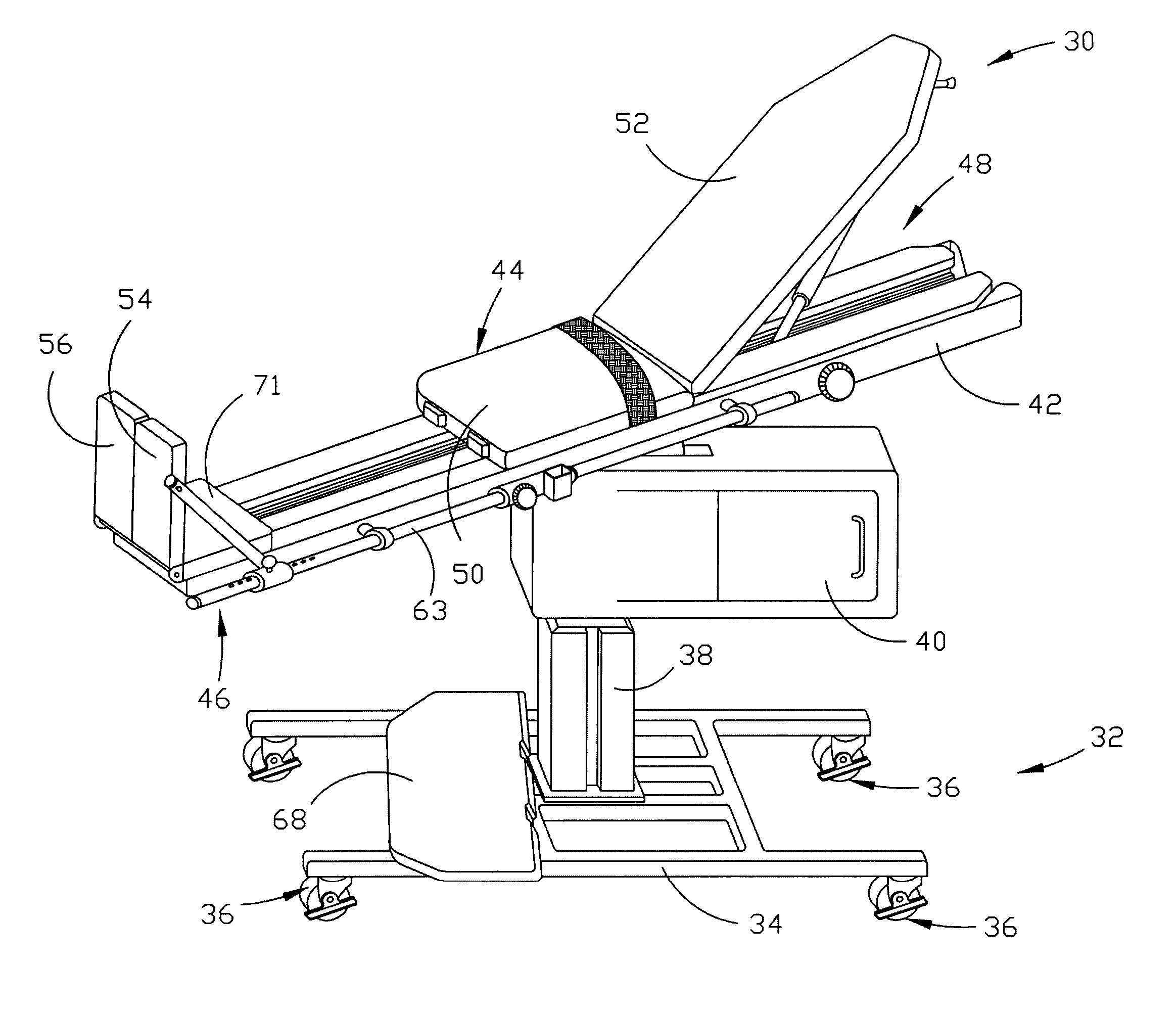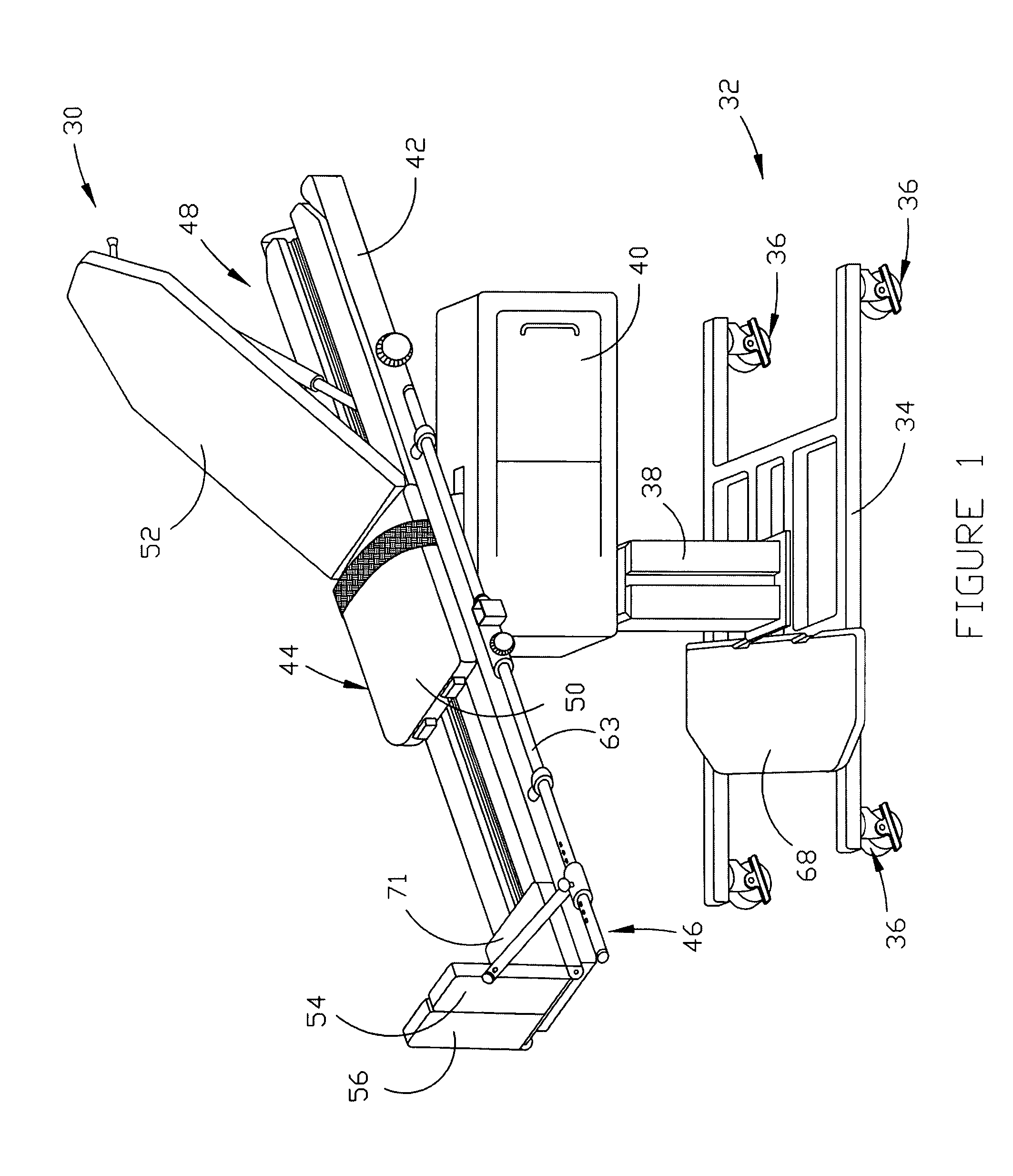Therapeutic exercise device
a technology of therapeutic exercise and exercise device, which is applied in the field of physical therapy table, can solve the problems of difficult rehabilitation specialists, severe deterioration of muscle strength, and inability to support full body weight in standing, and achieve the effects of facilitating upper extremity exercise, facilitating patient transfer, and improving strength and conditioning
- Summary
- Abstract
- Description
- Claims
- Application Information
AI Technical Summary
Benefits of technology
Problems solved by technology
Method used
Image
Examples
Embodiment Construction
[0039]As shown in FIGS. 1-6, preferred therapeutic exercise device 30 includes base 32 having base frame 34, wheels 36, support column 38 and storage compartment 40. Support frame 42 is pivotally mounted on the base, and carriage 44 is mounted for sliding movement along at least a portion of the support frame. Support frame 42 has a lower end 46 and an upper end 48. Carriage 44 includes lower section 50 and upper section 52 that is pivotally attached to the lower section. Device 30 also includes left foot rest 54 and right foot rest 56, each of which is independently pivotally attached to the lower end of the support frame. A first body restraining belt 58 is provided to secure the body of a patient to the carriage.
[0040]Carriage 44 preferably includes four friction-free bearing wheels 60 (shown in FIGS. 5, 14 and 19) that track in guide rails 62 (see FIGS. 15 and 19) of support frame 42. Adjustment rails 63 are attached on the outer sides of support frame 42. As shown in FIGS. 1-6,...
PUM
 Login to View More
Login to View More Abstract
Description
Claims
Application Information
 Login to View More
Login to View More - R&D
- Intellectual Property
- Life Sciences
- Materials
- Tech Scout
- Unparalleled Data Quality
- Higher Quality Content
- 60% Fewer Hallucinations
Browse by: Latest US Patents, China's latest patents, Technical Efficacy Thesaurus, Application Domain, Technology Topic, Popular Technical Reports.
© 2025 PatSnap. All rights reserved.Legal|Privacy policy|Modern Slavery Act Transparency Statement|Sitemap|About US| Contact US: help@patsnap.com



